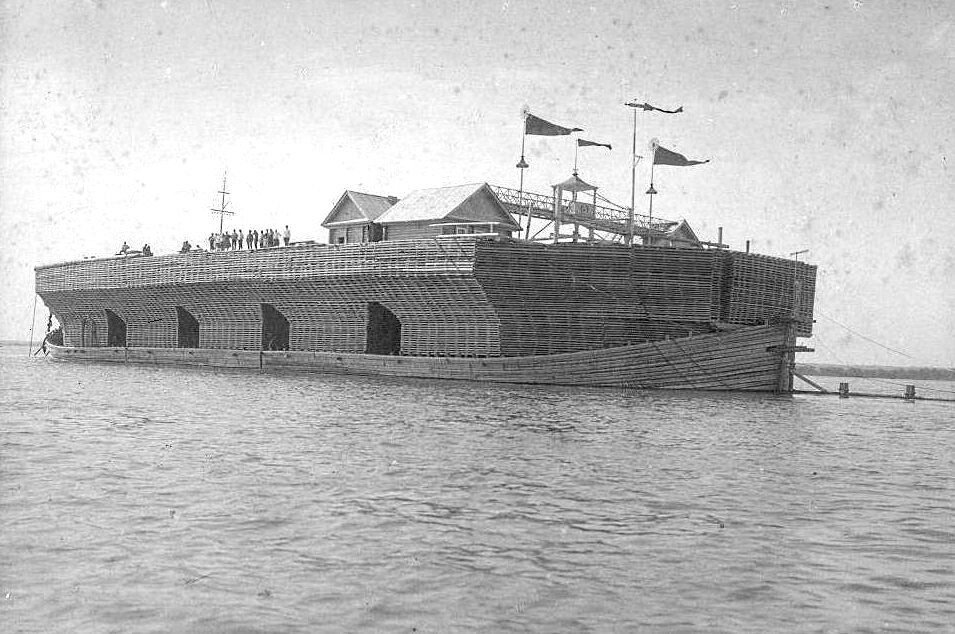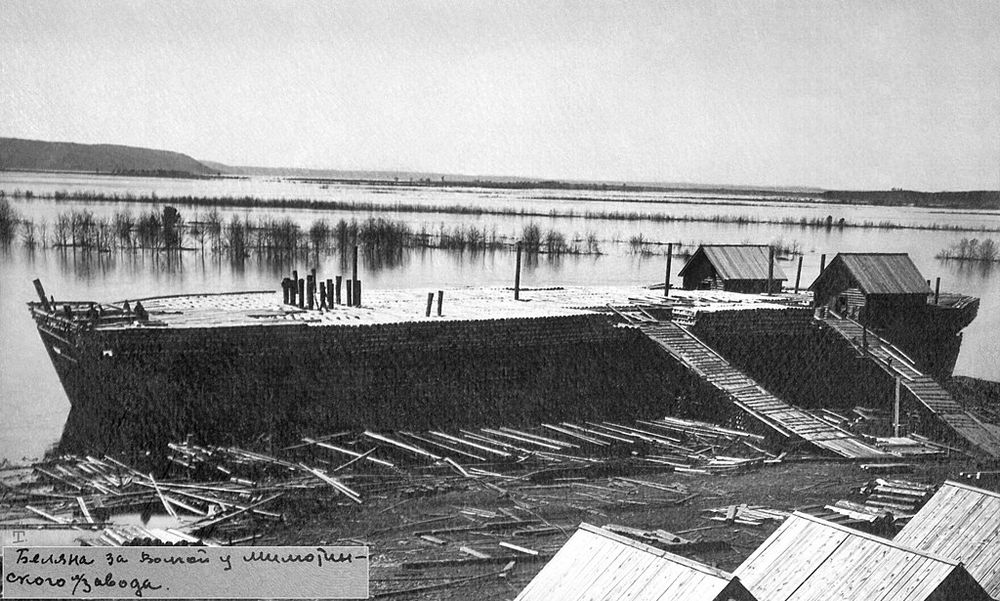The Belyana were some of the largest wooden ships ever built. Yet, they were only meant for a single journey.
They were built to transport huge quantities of timber along the Volga and Kama. Instead of just floating the logs down the rivers, they were fashioned into enormous ships and these large vessels were rowed or floated downriver. At their destination, the vessel was disassembled and the wood sold. Between the 16th and the 19th centuries, hundreds of belyanas were built every year and floated down the rivers.
With more than a fifth of the world's forests, timber production is one of the country’s oldest economy. Wood was logged in winter. Loggers would spent the entire winter in the forest cutting down trees and preparing them for transportation. After the spring flood, when rivers returned to normal flow, construction of belyanas started. They took the entire summer, finishing in autumn. First the hull was built using spruce beams and pine boards. The flat bottom was made of spruce and the walls were made of pine. About 240 pine and 200 spruce logs were needed to build a medium-sized belyana. The vessels were originally built without a single nail and only later, in the 19th century, did iron nails begin to be used. No tarring was performed, and the logs were simply tied tightly together. The lack of tar gave the belyans a whitish appearance, from which comes its name. Belyana means “faded” or “white”.
The load of logs, beams and planks was distributed in even rows with wide openings between them so as to provide quick access to its bottom in the event of a breach or other accident. In addition, properly laid logs dry faster, which protects them from rot. Like the hull and the superstructure, the deck too was made of a load, usually of cut boards. Two cabins were installed near the stern, and served as a balance and as quarters for the crew. A high transverse bridge was built between their roofs with a cabin cut in the middle, where the pilot was located. Belyanas were richly decorated with flags of the state as well as that of a particular merchant, which most often depicted the blessings of saints or some symbols appropriate to the occasion.
Small belyanas had a draught of 2.5 to 2.8 meters and could carry up to 1,600 tons. Medium belyanas had a draught of approximately 3.5 m and could carry 3,200 tons. The large ones measured up to 120 meters long and 25 meters wide, and had a draught of 5 meters. They could carry 12,800 tons of wood, comparable to a modern container ship.
Each belyana was crewed by 15 to 35 sailors, while larger ones had up to 100. Most of them worked on the pumps that pumped water from the hull, which tended to flood during the journey.
The belyanas had no propellers and moved by the action of the river. A huge rudder placed in the stern of the vessel allowed the pilot to navigate the belyana.
After a 2,000 to 3,000 km journey along the Volga, the belyana would reach its destination, which was usually Saratov, Tsaritsyn (today's Volgograd), and Astrakhan, where the timber and hull were dismantled for firewood or went to sawmills for final processing. The boats' cabins were sold as ready-made houses.
Belyanas flourished in the middle of the 19th century, when steamboats ran on wood, which had to be brought to the towns of the lower Volga. Up to 500 steamships on the Volga needed large quantities of firewood to propel them. After ships started to run oil, the demand for wood decreased. Besides, with the development of the railway system, the cost of transportation by rail became cheaper than by water, and belyanas became obsolete.




















Comments
Post a Comment